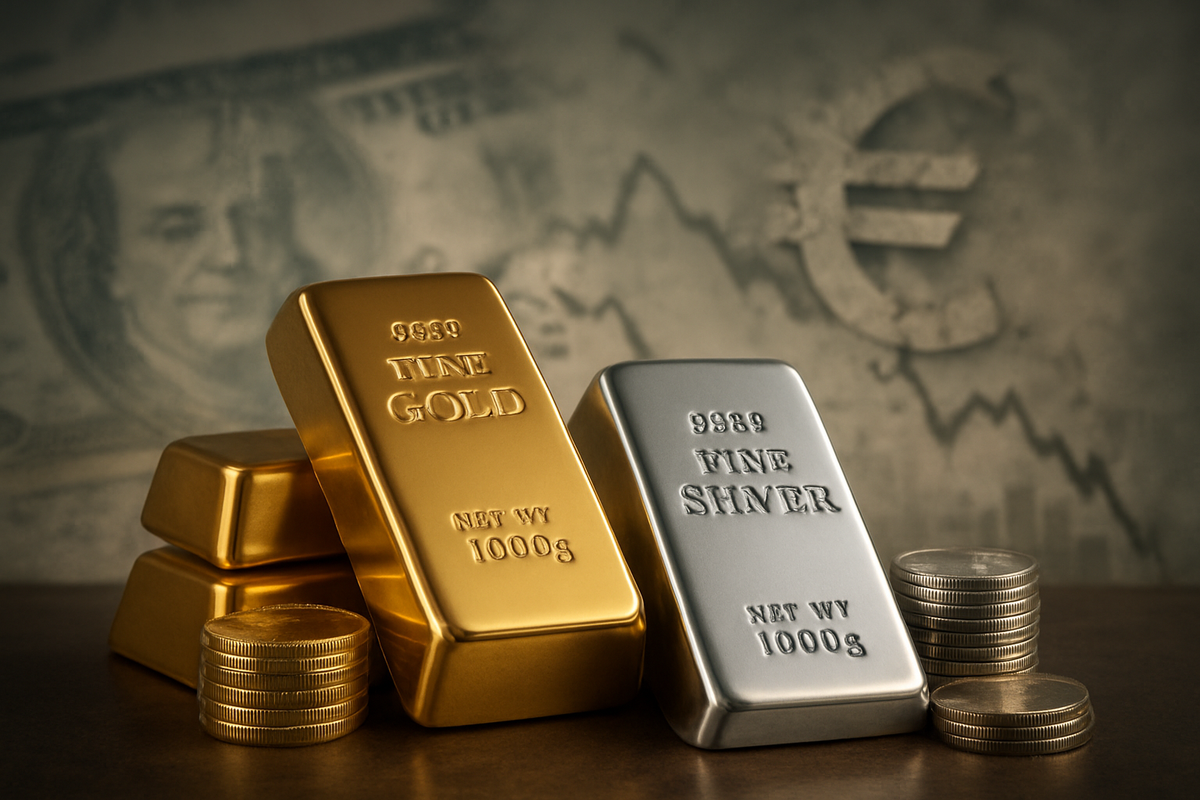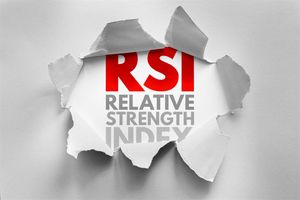
In a financial landscape increasingly defined by unprecedented government debt and unconventional monetary policies, a powerful investment thesis known as "The Debasement Trade" has taken center stage. As of October 2025, investors are flocking to real assets, particularly gold and silver, seeking refuge from the perceived erosion of purchasing power in fiat currencies. This strategic pivot reflects a deep-seated anxiety over the long-term stability of traditional money, driving precious metal prices to historical highs and reshaping portfolio allocations across the globe.
The immediate implication of this trend is a significant revaluation of tangible assets. Gold prices have surged past $4,000 per troy ounce, with silver also experiencing a substantial rally. This movement is not merely speculative; it represents a fundamental shift in investor sentiment, where the intrinsic value and scarcity of precious metals are increasingly prized over the printed promises of central banks. The "debasement trade" is a defensive play, a widespread acknowledgment that the fiscal policies of major economies may be leading towards an inflationary future where hard assets offer a critical hedge.
Unpacking the Erosion: Understanding Currency Debasement
Currency debasement, at its core, is the process of diminishing the intrinsic value of a currency. Historically, this was a literal act: rulers would reduce the precious metal content in coins, often by mixing them with cheaper base metals, while maintaining their face value. King Henry VIII's "Great Debasement" in England and the Roman Empire's gradual reduction of silver in its coinage are classic examples, allowing governments to fund wars or lavish spending without overtly raising taxes.
In the modern era, with the global adoption of paper and digital fiat currencies not backed by physical commodities, debasement manifests differently. It occurs primarily through an excessive expansion of the money supply by central banks and governments, often to finance burgeoning deficits or stimulate economic growth. This increase in currency without a corresponding rise in economic output leads directly to inflation – a decline in the currency's purchasing power. As of October 2025, concerns about persistently high government debt globally, particularly in the United States, are fueling fears that politicians may prioritize debt financing over price stability, influencing central banks to maintain accommodative policies even as inflation persists above targets. The Federal Reserve, for instance, is widely expected to cut interest rates later this month, a move some analysts suggest prioritizes employment risks over inflation control.
The timeline leading up to this moment is marked by years of quantitative easing, massive fiscal stimulus packages, and a global pandemic that supercharged government spending. These measures, while intended to avert economic collapse, have ballooned national debts to unprecedented levels. Key players include central banks like the U.S. Federal Reserve, the European Central Bank (ECB), and governments worldwide, whose fiscal and monetary decisions are the primary drivers of currency supply. Initial market reactions have been unequivocal: a flight to quality in precious metals and, interestingly, cryptocurrencies like Bitcoin, which some now label "digital gold." This collective movement underscores a lack of confidence in the long-term value of traditional fiat currencies.
Winners and Losers in a Debased World
The "Debasement Trade" creates clear winners and potential losers in the financial markets. Companies directly involved in the extraction and processing of precious metals stand to gain significantly. Mining giants such as Barrick Gold (NYSE: GOLD) and Newmont (NYSE: NEM) are poised to benefit from higher gold and silver prices, translating into increased revenues and potentially fatter profit margins. Their stock performance often correlates strongly with the price movements of the underlying commodities. Similarly, companies providing services or equipment to the mining industry could see increased demand.
Investment vehicles designed to track precious metals, such as the SPDR Gold Shares (NYSEARCA: GLD) and the iShares Silver Trust (NYSEARCA: SLV) exchange-traded funds (ETFs), are direct beneficiaries, offering investors liquid access to the price movements of gold and silver without holding the physical metal. Other companies that hold significant physical precious metal reserves on their balance sheets, or those with robust business models that can pass on inflationary costs, may also fare well.
Conversely, companies heavily reliant on stable currency values or those with substantial debt denominated in a depreciating currency could face headwinds. Businesses with fixed-price contracts or those operating on thin margins may struggle to absorb rising input costs caused by inflation. Companies that require significant capital expenditure may find borrowing costs increase if central banks are eventually forced to hike rates more aggressively to combat persistent inflation. Furthermore, sectors that are typically sensitive to higher interest rates, such as real estate or highly leveraged growth companies, could suffer if the debasement trade eventually forces central banks' hands.
The Wider Significance: A Paradigm Shift
The "Debasement Trade" is more than a fleeting market trend; it signifies a potential paradigm shift in global finance, reflecting a broader industry trend towards "de-dollarization" and a renewed focus on real assets. The sheer volume of government debt, coupled with the perceived willingness of central banks to prioritize economic stimulation over strict inflation control, has eroded faith in the long-term purchasing power of fiat currencies. This fits into a narrative where global central banks themselves are diversifying their reserves away from traditional fiat currencies and into gold, further validating the debasement thesis.
The ripple effects are far-reaching. Competitors in the investment management space are being forced to adapt, with more funds and products emerging that focus on inflation hedges and real assets. Partners in global trade may increasingly seek to conduct transactions in alternative currencies or commodities to mitigate currency risk. Regulatory bodies and policymakers face immense pressure to address fiscal imbalances and re-establish central bank independence, though the political will to do so remains a significant question. Historically, periods of extreme currency debasement, like the hyperinflation in Weimar Germany or the economic instability during the 1970s oil shocks, demonstrate the profound societal and economic consequences of unchecked monetary expansion. The current environment, while not yet at such extremes, echoes these historical precedents, prompting investors to seek similar safe havens.
What Comes Next: Navigating the Uncertainty
In the short term, the momentum behind the "Debasement Trade" is likely to persist as long as government debt levels remain elevated and central banks continue to signal a dovish stance. The anticipated interest rate cut by the Federal Reserve later in October 2025 could further fuel this sentiment, making non-yielding assets like gold more attractive. Investors should watch for continued capital flows into precious metals, as well as the performance of "digital gold" assets like Bitcoin.
In the long term, the trajectory depends heavily on central bank policy pivots and fiscal responsibility. If governments manage to rein in spending and central banks demonstrate a firm commitment to inflation targets, some of the urgency behind the debasement trade could subside. However, if the current path of high debt and accommodative monetary policy continues, precious metals could become an even more entrenched component of diversified portfolios. Strategic pivots for investors may include increasing allocations to physical gold and silver, exploring precious metal mining equities, or even considering inflation-protected securities, though the latter still carries some sovereign risk. Market opportunities may emerge in commodities broadly, as they often serve as inflation hedges. Challenges include the potential for speculative bubbles in precious metals and the inherent volatility of commodity markets. Potential scenarios range from a gradual normalization of fiscal and monetary policy to a prolonged period of elevated inflation and continued currency erosion.
A Lasting Impact on Market Structure
The "Debasement Trade" underscores a critical juncture in financial markets, highlighting a growing distrust in the stability of fiat currencies. The surging demand for gold and silver is not merely a reaction to current events but an assessment of the market moving forward – one where the traditional role of precious metals as a store of value is being powerfully reasserted. The key takeaway for investors is the importance of diversification and holding assets that are independent of government and central bank policy.
As we move forward, investors should closely monitor central bank communications, government fiscal policy decisions, and inflation data. Any signs of a decisive shift towards fiscal austerity or a more hawkish stance from central banks could alter the dynamics of the debasement trade. Conversely, continued expansion of the money supply and persistent inflation will likely reinforce the appeal of precious metals. The lasting impact of this period may well be a permanent recalibration of portfolio construction, with real assets playing a more prominent and essential role in safeguarding wealth against an uncertain monetary future.
This content is intended for informational purposes only and is not financial advice






